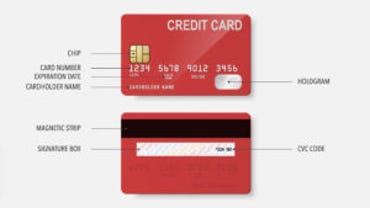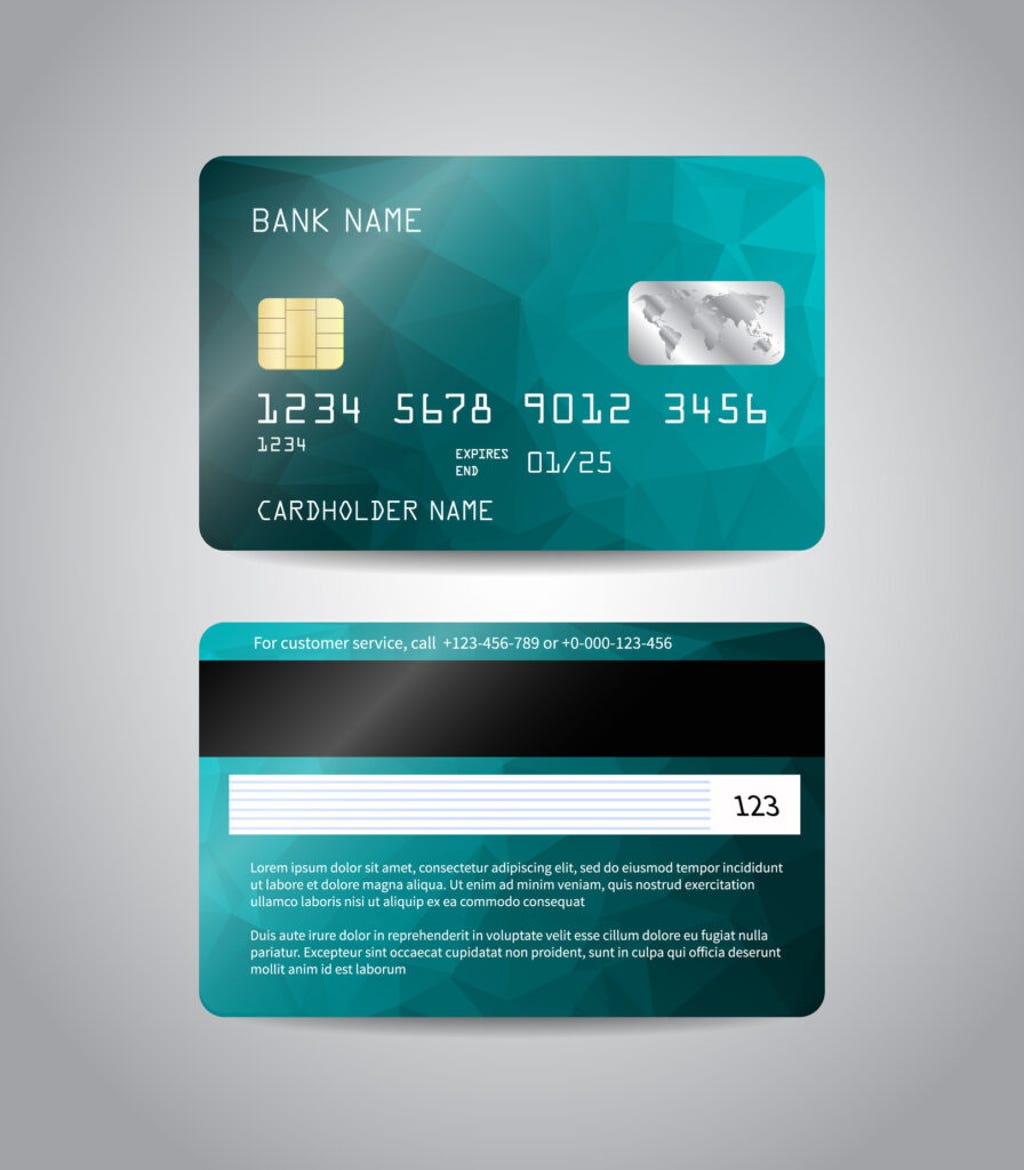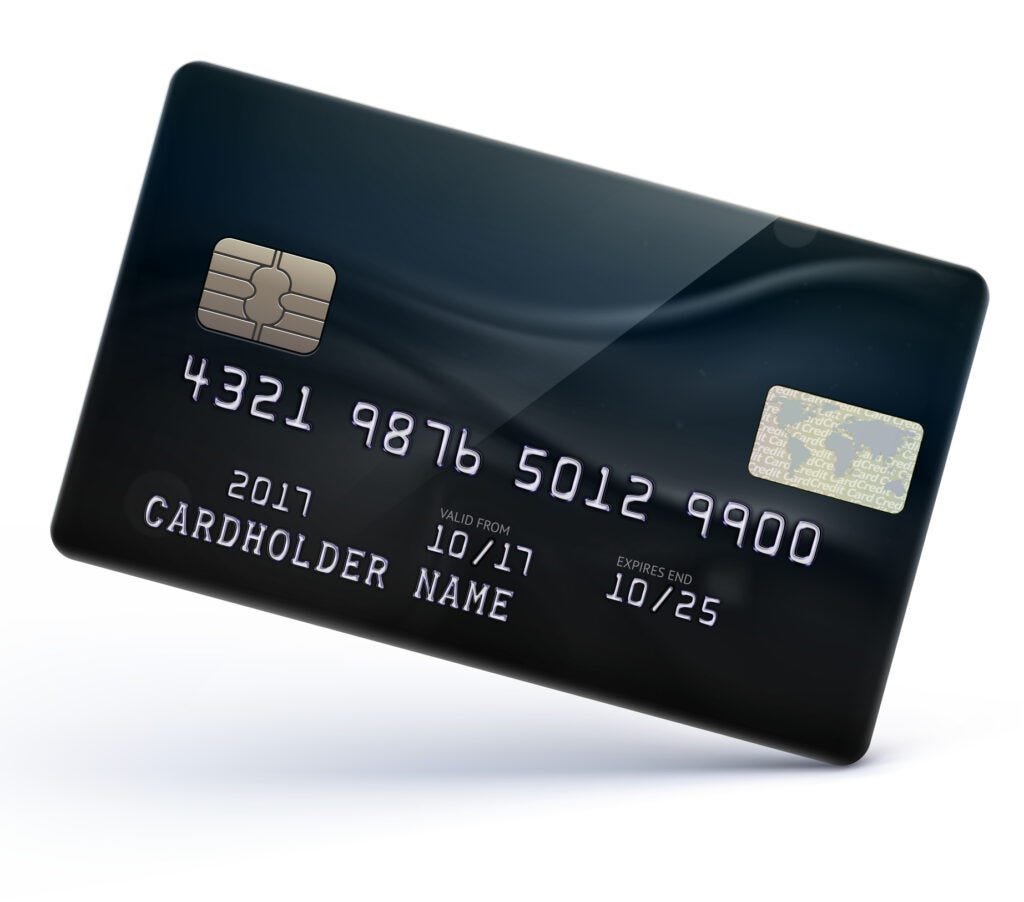
Your credit card is more than just the 16 digits you use for transactions. Each symbol and number on your card serves a purpose, whether for fraud protection or simplifying transactions.
But what does each component of your credit card actually mean? We’ll break down the symbols, numbers and words on your credit card and explain why they’re all important.
Note: Every credit card is different. But while each number and symbol varies, the components are generally the same.
Credit card issuer
Your credit card issuer is the bank, credit union or financial institution that issues your credit card. It’ll also handle the application, agreement terms and rewards. You’ll pay your bill, check your balance, redeem your rewards and contact customer service through your credit card issuer.
The credit card issuer is usually mentioned on the front of the card, and in the card’s name. As an example, Bank of America is the credit card issuer for the BankAmericard® credit card*.
Card name
The name of the credit card varies depending on the credit card issuer and the type of card. The credit card name usually contains the name of the card issuer and the type of card it is.
No two credit card names are exactly the same, but you’ll see some similarities. For example, the Chase Freedom Flex℠* and the Chase Freedom Unlimited® have similar names. You can usually find your card name on the front of your credit card.

Read more: Chase Freedom Flex vs. Chase Freedom Unlimited: Which Is Better?
Card network
The credit card network is the middleman between merchants and banks. Your network will determine where your credit card will be accepted. Visa, Mastercard, Discover and American Express are all card networks. Usually, the logo for your credit card network is on the front of your credit card, too.
The big difference between the credit card issuer and the network is that the network has the tools and framework for you to make transactions at stores and online. The issuer focuses on issuing and managing different types of cards.
Note: American Express and Discover are both card issuers and card networks, while Visa and Mastercard partner with card issuers.
Card number
Though most cards have a 16-digit number, your credit card number can be between 13 to 19 digits long and it’s specific to your credit card. The number contains the issuer identification number, the bank identification number to start, then your individual card number.
You’ll use your credit card number to make online and phone transactions. Be sure not to share your card number with anyone, for your safety and security. Depending on the card issuer, the number may be found on the front or back of your card.

To make your card number more secure, you use a virtual card when making transactions online or by phone. A virtual card offers a temporary, typically one-time use number that ties back to your credit card account. This can help keep your actual card number safe.
Cardholder name
The cardholder name is the name of the account holder. It’s also the name you’ll use when entering billing information for transactions. Usually, you can find it on the front of the card, though it can vary by the credit card issuer. If you have an authorized user on your credit card account, their name will appear on the individual card issued to each credit card holder.
Account opening date
The account opening date is the month and year you opened your credit card account. Some issuers don’t show this date on the card. Those that do generally display it as MM/YY on the back of the card.
Expiration date
The credit card’s expiration date tells you when the card will expire, which is when you’ll need a new one. You’ll also see this date displayed as MM/YY on the back of your card.

For most issuers, the card will still work up until the last day of the month it’s set to expire. So a card with an expiration date of 06/24 will typically work through the end of June 2024.
When paying online, you may need to enter the expiration date along with your card number and card verification number.
CVV
The Card Verification Value, also known as the CVV, is another fraud and security measure for your credit and debit cards.
Usually, the CVV is a three- or four-digit number on the back of your card. The CVV is unique to each credit card. So, when you get a new card, your CVV will change. For extra security, you may need to enter this number when making online or phone transactions. It should be kept confidential, just like your card number.
EMV chip
The Europay, Mastercard and Visa chip, known as the EMV chip, is on all debit and credit cards for fraud protection. Your card’s EMV chip is a small magnetic chip that you’ll insert into card readers instead of swiping your card. When you make an in-person transaction, a unique code is created that’s tied to the card purchase -- unlike swiping your card using its magnetic strip, which doesn’t have the same capability. The EMV chip is usually on the front of the credit card.

Signature box
The signature box, where you’ll sign your card, is usually on the back of your credit card. Some credit card issuers may consider this signature as another way that you agree to the credit card’s terms. Merchants may also compare this to your in-person signature to see if they match -- though this form of verification isn’t as common anymore.
Instead of a signature, some cardholders put “see ID” for the merchant to ask for a photo ID before completing the transaction -- another fraud prevention tactic. But nowadays, it’s rare that merchants check, especially when using contactless payment or EMV chips.
Depending on your credit card issuer or how long you’ve had your card, you may not see this box on the back of your card because many issuers no longer include it.
Hologram
The hologram is the small, shiny 3D sticker on either the front or back of your credit card. It’s another security measure, but this one ensures that your card is legal and is not easy to copy.
Among other security measures, merchants should check your credit card to see if the hologram is present for in-person purchases. There’s no way to verify your card’s hologram for online transactions.
Contactless logo
The contactless logo looks like the Wi-Fi signal turned horizontally. If your card has this symbol, it indicates you can make contactless transactions by holding your card over the reader instead of swiping or inserting it. If your card doesn’t have this logo or the card reader doesn’t accept contactless payments, you’ll have to insert or swipe your card instead. The symbol is commonly found on the back of your credit and debit card.
Magnetic stripe
The magnetic stripe on the back of your credit card is not commonly used anymore. Also known as a magstripe, this magnetic stripe contains embedded personal information that card readers can interpret when you swipe your card. Instead, most card readers today are set up to read your EMV chip and will ask you to insert your card. You may also tap your credit card on the reader if both the card and reader are set up for contactless payments. If your EMV chip is not working or a card reader only supports swiping, you may need to use your card’s magnetic stripe.
Customer helpline
The customer helpline is the phone number you can call if you have questions about your account or need assistance with your card. Customer service can help replace your card, report unauthorized transactions or make a payment. You can also get help with rewards and cardholder perks. Alternatively, you can log in to your online account for more information.
The bottom line
Your credit card has a lot of information on it. Take time to familiarize yourself with your credit card’s anatomy, especially the identity theft and fraud prevention measures. If you’re unsure where certain card information is or have questions, contact your credit card issuer for help. Most importantly, keep your credit card information private to help protect your account and prevent unauthorized transactions.
*All information about the Chase Freedom Flex and the BankAmericard credit card has been collected independently by CNET and has not been reviewed by the issuer.
The editorial content on this page is based solely on objective, independent assessments by our writers and is not influenced by advertising or partnerships. It has not been provided or commissioned by any third party. However, we may receive compensation when you click on links to products or services offered by our partners.

